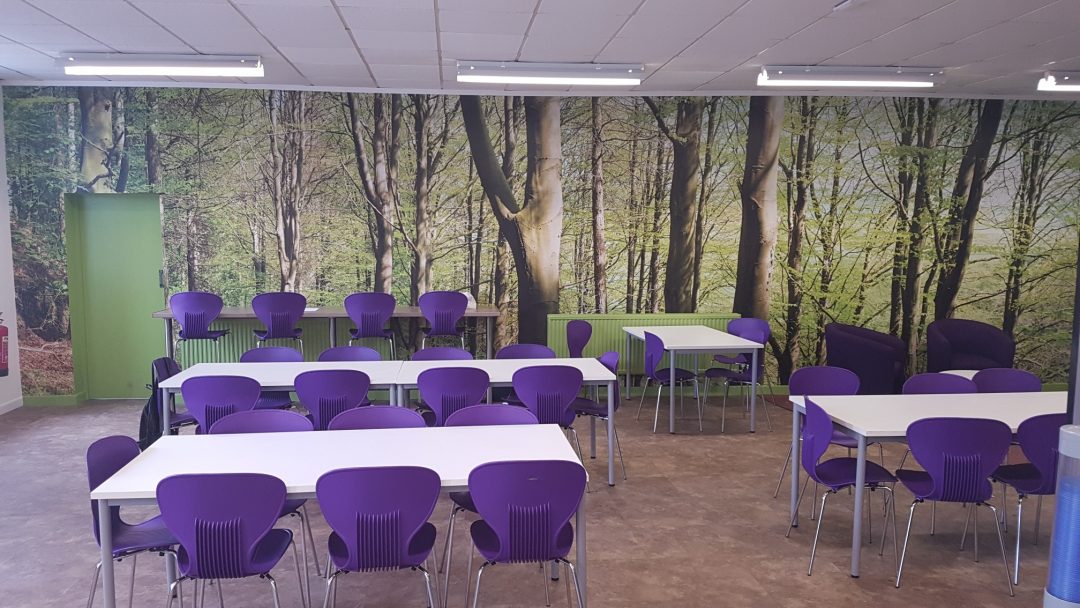With the final term coming to an end, our clients within the education sector are preparing for a Summer of building extensions and playground upgrades. When it comes to internal work, we’re finding that colour is playing a big part in the internal re-design of spaces. Whether it’s splashes of colour on the seating or wallpapers depicting forests scenes, there’s something to be said for creating an environment which increases a student’s desire to learn. So, where does colour fit in?
Colour has the ability to inspire, excite, soothe, heal and even agitate. This is particularly true for children, who can be extra sensitive to colour’s impact. So the importance of picking out just the right colour for social spaces and classrooms is extremely important.
“Colour has the ability to inspire, excite, soothe, heal and even agitate.”
Red
has the ability to energise the body and excite the mind, increasing heart and breathing rates. However, some research suggests that too much exposure to red encourages aggressive behaviour and an inability to focus. The bottom line: Red is great as an accent but might not be the best colour for children who are fidgety or restless.
Orange.
Largely underused, orange is perhaps one of the most misunderstood colours in the paint deck. This warm, friendly and youthful colour is actually great for children since it’s said to encourage confidence, extroversion and independence. The social nature of this colour also puts children and their friends at ease, inspiring communication and cooperation.

Yellow.
Most of us associate yellow with feelings of happiness and cheerfulness. Studies also pair this bright and cheery colour with motivation; softer yellows can aid concentration, while brighter ones can increase memory. Beware of using too much bright yellow, though. In large doses it may create feelings of agitation and even anger.
Green.
This calming, natural colour has a soothing impact on a child. Scientists have also found that green may improve a child’s reading speed and comprehension. There’s no need to keep this anxiety-reducing colour to a minimum.
Blue.
Having the opposite effect of red, blue decreases feelings of anxiety and aggression and lowers blood pressure and heart rates. Children who experience tantrums or other behavioural problems may appreciate the soothing effects of a blue room.
Purple.
Often associated with royalty, purple is ambitious and self-assured. It’s also the colour of passion, creativity, wisdom and spirituality. This deep and emotive colour is great for inspiring sensitivity and compassion in children. But if children are particularly sensitive, you may want to keep this colour limited to accents.
Pink.
Although it’s usually associated with typical girly spaces, pink has a calming feel that can translate to both sexes.
Warm colours.
Warm colours inspire happiness, coziness and comfort in most people. They can also make large, open spaces feel more intimate for young ones. Of course, this doesn’t mean you’re limited to brown and tan — use these easy colours as a platform for brighter and more daring shades.
Cool colours.
Some of us associate cool colours with sterile, hospital-like environments, but lighter cool colours can have a calming effect on children. Plus, many of these colours help small spaces seem a little bit more open. Try layering in shades of cream for some softness and contrast, and consider comfortable and cuddly textiles for warmth.
So, next time you’re looking to refresh your social and classroom spaces, give us a call and we’ll happily assist in creating the right environment where children can shine!
